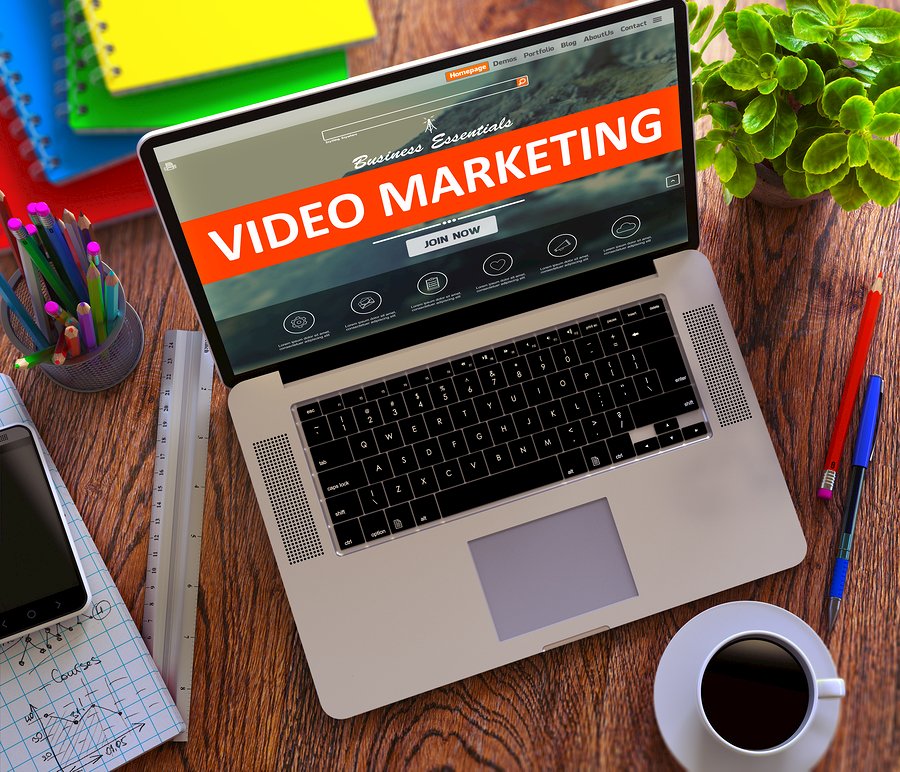To make an impact in the digital era, visual content is vital. With so many types of visual content available, it is essential to find out what kind of visual content makes the most impact.
Is it an original photograph or a compelling video? Is it perhaps an inspiring infographic that people can’t wait to share? Read on to find out more.
Why visual content is so important
More than half (65%) of us are visual learners, according to the Social Science Research Network. We are wired to consume visual content faster and more efficiently than words.
From a study done by Skyword, we know that content with relevant images receives 94% more views than content without. Think about that – almost double the views! Tweets with images have been found to acquire 150% more retweets.
When users are presented with large amounts of text, it puts them off. Break it up with exciting images, and they are more likely to read it. What you post today must cater for shorter attention spans than ever and increased adoption of mobile internet access.
When people receive information without an image, they are only likely to remember 10% of the information three days later. If the same information is paired with an image, their retention increases to 65%.
there are numerous statistics that support the importance of media, for example, Cisco has predicted that by 2020 video will make up more than 90% of all internet traffic.
An infographic presented by Studio-C gives statistics for best visual engagement on social media: 44.5% for images, 33.2 for video, 19% for infographics and 3.2% for other types.
6 Major types of visual content
What is it we’re talking about when we refer to visual content? Here are some of the main types of visuals that content marketers create.
Images: Images are considered by many to be the most critical factor when it comes to optimizing social media content.
Video: Video makes it easier for people to digest information. Audiences are far more likely to share, embed, and comment on video content than text.
Infographics: An infographic consists typically of data presented in visual form. Complex statistics can be displayed in an infographic in an easily digestible and compelling way.
Screenshots: Screenshots are a great way of giving your audience a glimpse into how your product or services work. It can provide more meaning to the information you present.
Charts and graphs: Using charts and graphs helps to make your data visual.
Slideshows: By using slideshows, you can present complex information in digestible bites. Slides are particularly useful in making presentations more entertaining.
Optimize your visual content
Bad visual content can hurt rather than help your marketing attempts. Here are some tips on how to make sure your visual content performs well.
Images
Relatable images are the top currency in content marketing. Creative, eye-catching photographs you have taken yourself are great for drawing attention.
However, creating images yourself is not that easy and buying them is expensive. Alternatively, many good quality photos can be found on photo-sharing sites, such as Pixabay and Morguefile.
Canva is an excellent program for personalizing images to suit your purposes. It has an easy drag-and-drop interface that allows you to create the right size covers for your posts on different social media platforms, infographics and much more.
- Don’t just use images randomly. Carefully select and place them for maximum impact.
- Avoid over-used stock photos
- Never use boring or irrelevant images.
- Design with grids to give professionalism and order to photos, a photo gallery can do the trick.
- Keep in mind that images require different dimensions for different social networks. For instance, Twitter’s inline images must be 440 pixels wide by 220 pixels tall. If images are outside of these dimensions, they may be cropped.
Videos
Many different types of videos are used today for business purposes – explainer videos, how-to videos, customer testimonials, case studies, tutorials and more. Many marketing professionals worldwide rely on video content, saying it has the best ROI. As per stats, marketers who use video grow revenue at nearly 50% faster than those who don’t use video.
Many businesses today use a paid solution to host video content because it offers them flexibility, valuable analytics and more options over a free solution. YouTube offers a broad reach, but it doesn’t drive traffic back to your site.
Using a video hosting platform like Cincopa enables you to customize your videos to suit the ethos and style of your brand. It provides you with in-depth analytics and helps you to manage your video content effectively.
- The low-quality video will hinder your marketing efforts.
- Quality is more important than quantity.
- A/B test your videos to find a winning formula. Use testing to determine optimal length, types of CTAs, using animation and more.
Infographics
It probably takes much more for an infographic to go viral than an image or a video. However, according to Neil Patel, a well-known web expert, it is possible. How can you create a successful infographic?
- Pay attention to shapes, fonts and color combinations. If your brand does not have set fonts and colors, now might be the time to find some.
- Make sure your data is accurate.
- Try to convey a narrative to bring dull stats to life.
- Include a thumbnail image and a hyperlink to your site when you share on social media. Users can follow the link to the full image on your site.
Screenshots
Screenshots may not have the visual appeal of a stunning photograph, but they can be very beneficial when it comes to inspiring trust. For instance, a screenshot can be used to capture a significant customer review from social media or an industry forum. Annotate your screenshots to draw attention to a specific part of an image (such as showing your audience which button to click). Use one to back up a claim made in sales content or combine one with a testimonial to offer more credibility.
- If you capture too little or too much in a screenshot, viewers may be confused. Try to aim for a happy medium.
- Use the cropping feature to cut out unnecessary portions of an image.
- Display screenshots at their original size if you want them to be crystal clear. Scaling them down or up can cause distortions.
- Capture a subject in two different states and combine the images to create a comparison.
Charts and graphs
Imagine that you’ve just collected some survey responses from a questionnaire. You may have responses such as strongly agree, agree, neutral, disagree, strongly disagree. How do you make this easy to understand?
Using vertical bars in different colors in a bar graph to represent the survey responses creates a strong visual impression. For a close-ended question with a single answer, you can create a pie chart.
- Select the type of chart or graph that represents your data in the most understandable way. Choosing the wrong one or just defaulting to the most common form can confuse with viewers and lead to a mistaken interpretation of data.
- The eyes of viewers are attracted to color. To tell a story with data, you need to use action colors that drive eyes towards the data where the story is being said.
- Think about more than numbers when considering how to present data. You must speak to hearts and heads. You need to try and humanize and ground your data in real life in some way.
Slideshows
often times a business have a few messages they want to convey to potential clients. using text can create a rejection due to the length and complexity of conceptualizing multiple values, videos can also be problematic if the first massages that you’re conveying aren’t relevant to the audience that might be interested in the second or third massage.
Use a slideshow on your homepage or landing page, to convey multiple messages that the client can browse through on his own accord, or stumble upon the right message while reading the page. you can use a simple HTML slideshow or other slideshows with unique designs that emphasize different slides in different ways.
- Use your brand’s colors, logo, and fonts.
- Use images that offer a glimpse into the message you’re conveying.
- Be sure all the images work well with each other, and with your brand.
- Your slides need to be clean and get straight to the point.
- Keep slides down to a single idea.
Final thoughts
Images are crucial to engagement on social media. Marketers believe that using video increases their ROI. Infographics, slideshows, charts, and graphs are other types of visuals that are not as crucial, but if they are done well, they can have an impact. Regularly creating and posting high-quality visual content which resonates with viewers will enhance awareness of your brand. If visual content is boring or poorly designed, it will do more harm than good. Always take your audience into account when deciding on what type of visual content to create. As with any content, the substance of your visual content matters the most.


















